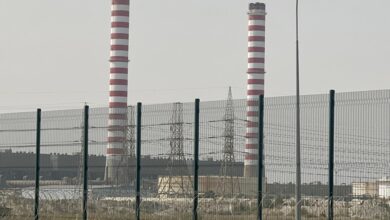Kuwait’s budget crunch mismatched spending and mounting debt
The new budget, among the country’s worst in decades, is problematic not only for its inflated spending but also for its timing, as it overlooks recent austerity measures, including cuts to pensions, health insurance, and financial allowances for state employees.

• The new budget was issued with unchecked spending,ignoring shifts in energy markets, while borrowing funds are allocated to covering deficits, contradicting Finance Minister Noura Al-Fassam’s pledges.
• The budget fails to address spending deviations, with salaries and subsidies consuming 80% of expenditures, while optimistic oil price estimates overlook market shifts and emerging pressures that could drive prices lower.
• Unchecked borrowing and debt refinancing could trap Kuwait in a financial crisis, as seen in Lebanon, Greece, and Argentina, unlike nations like the US, Japan, and China, which have leveraged debt for sustainable economic growth.
Late last week, two decree-laws were issued on economic matters, focusing on the country’s financial situation. The 2025-2026 state budget was released, forecasting a KD 6.3 billion deficit, while the Financing and Liquidity Law (Public Debt) authorized the government to borrow KD 30 billion over fifty years. Al-Jarida newspaper reported that these developments raise key questions about Kuwait’s fiscal future.
Worst in decades
The new budget ranks among the country’s worst in decades, not only due to its inflated spending but also given the circumstances of its issuance. It does not reflect many of the austerity measures implemented in recent months, such as canceling the ‘Afiya’ pension insurance scheme, ending health insurance for some government agencies, and reducing financial allowances for several categories of state employees.
Meanwhile, the Cabinet lifted restrictions preventing ministries and government agencies from increasing service fees after repealing Law No. 79 of 1995. However, these austerity measures failed to reduce overall budget expenditures, and the planned fee hikes were not included in the state’s non-oil revenues.
Deep economic imbalances in budget
Issued by a government holding both legislative and executive powers, the budget does not address deviations in public spending. Salaries and subsidies make up nearly 80% of total expenditures, highlighting a lack of policies to tackle deep economic imbalances, particularly in the labor market and demographics.
Moreover, budget estimates are based on oil market expectations that differ from current trends. While Kuwaiti oil is priced at $78 per barrel—above the base estimate of $68 but below the breakeven price of $90.5—the market signals that factors driving post-pandemic price increases are fading, while new pressures are emerging that could push prices lower in the near future.
Giving in and cheapening oil
OPEC+, which had stabilized prices through production cuts, began phasing out these reductions in April, increasing global output by 2.2 million barrels per day over a year. Meanwhile, negotiations to end the Ukraine-Russia war—the key geopolitical factor affecting supply risks—seem closer to success, whether through a ceasefire or a long-term truce.
Other emerging factors include US President Donald Trump’s policies and tariffs, which are expected to impact global economic growth and energy demand, alongside his stated goal of achieving a “cheap barrel of oil.” These developments signal financial challenges ahead for oil producers, particularly Kuwait, which relies on oil revenues for 88% of its new budget.
Law and spending priorities
A review of Law No. 60 of 2025, the Financing and Liquidity law, specifically Article 3, reveals that public debt funds are allocated primarily to covering current expenditures—such as financing the state budget in case of a deficit, restructuring debt, or repaying government obligations.
This contradicts Finance Minister Noura Al-Fassam’sclaim that the law fosters economic diversification and sustainable growth. Nowhere does the law specify that any portion of the KD 30 billion borrowing ceiling will fund projects aimed at economic diversification or structural reforms. Instead, it explicitly directs loan funds toward covering non-developmental expenditures, with the budget deficit as the top priority.
Risks and the ‘debt trap’
Perhaps the biggest risk of easy access to international debt markets is that borrowing occurs without a serious economic plan to reform the labor market, boost non-oil revenues, address demographic imbalances, or diversify GDP. As a result, borrowed funds will be used primarily to cover the budget deficit and, at current spending rates, may be depleted within four to five years.
In this scenario, discussions about refinancing or rolling over public debt could lead Kuwait into a financial entanglement that may become increasingly difficult to unravel.
Discussing the risks of diverting spending from developmental purposes and borrowing without a sound economic plan is not an expression of pessimism or unwarranted fear. Rather, it is a cautionary warning, backed by evidence from countries like Lebanon, Greece, and Argentina, which underestimated debt accumulation and eventually went bankrupt—crippling their economies, financial institutions, and even their currencies. This contrasts with nations such as the United States, Japan, China, and Britain, which have successfully used debt to finance sustainable economic growth.
Here, we must ask ourselves: which path are we truly on?














